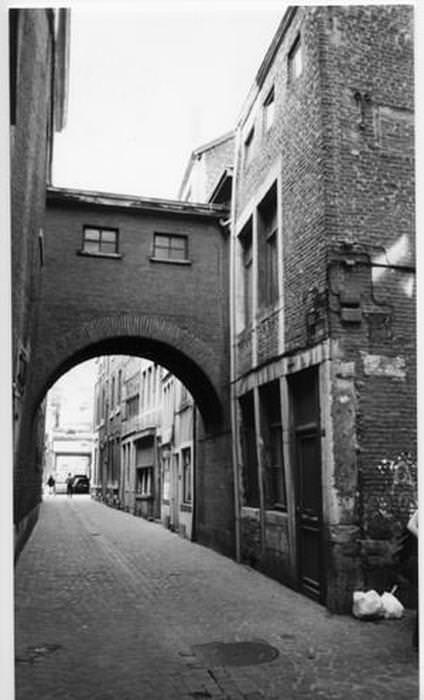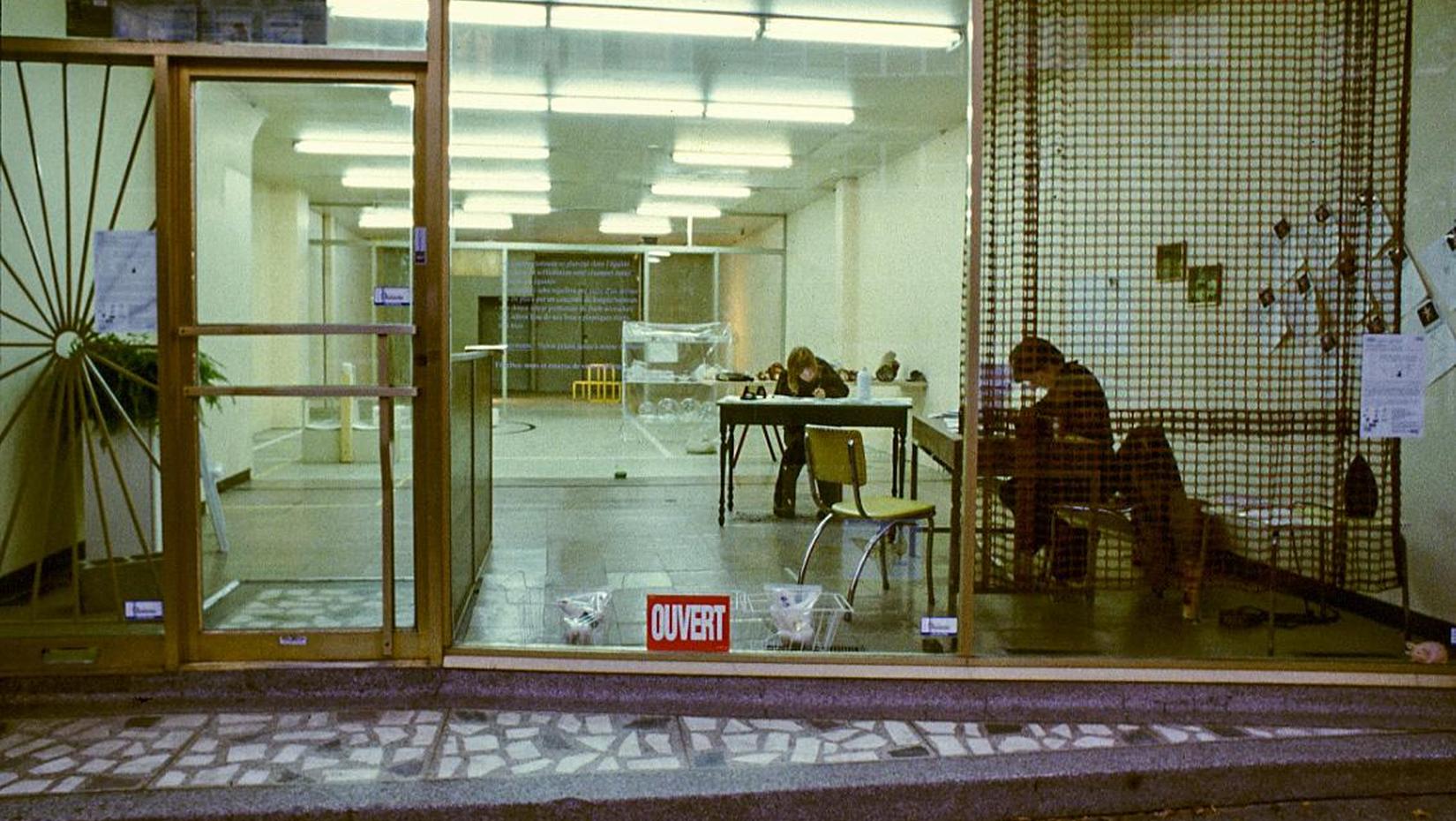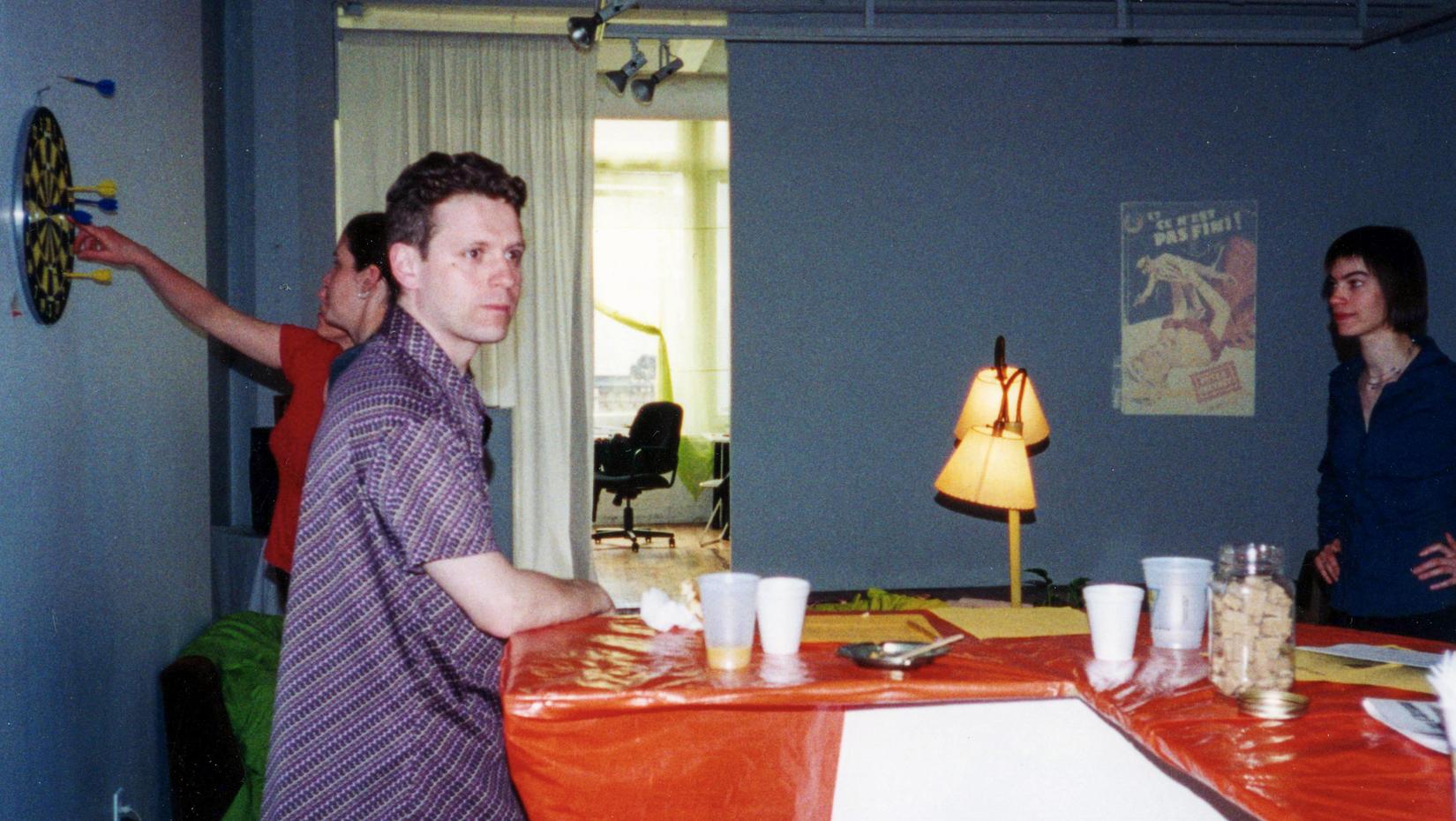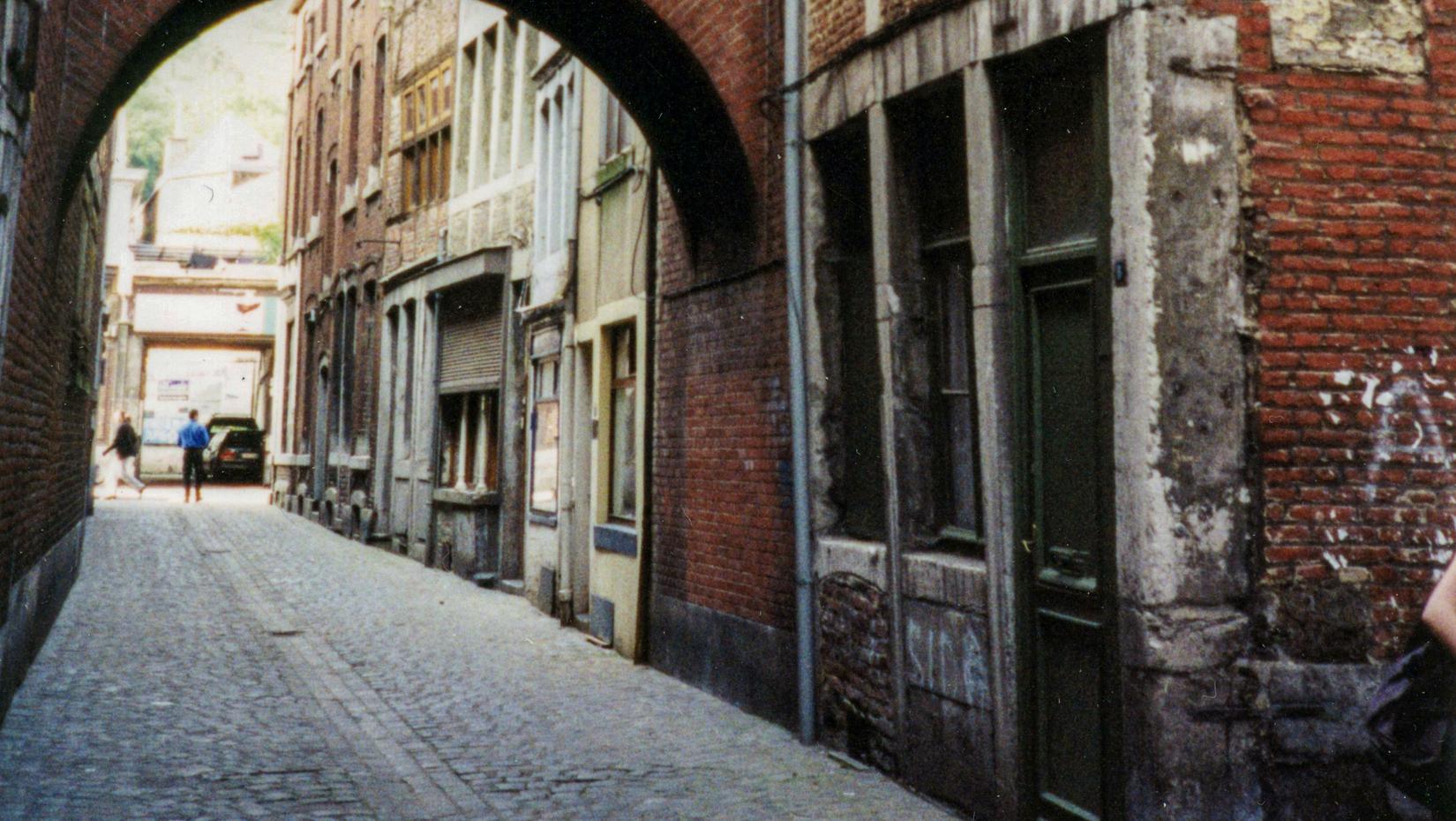Programming
L'Algèbre d'Ariane
Exchange and cooperation project between Liege and Montreal (Montreal part)
L'algèbre d'Ariane is a Liege-Montreal exchange project that explores the links between artistic practices, between singular spaces, between the One and the Other, between the private and the public spheres.
Café liégeois
Le Café liégeois welcomes you and presents "L'Algèbre d'Ariane": a cooperative and relational experiment between twelve artists. The first part has just taken place at Espace Les Brasseurs in Liège (Belgium), and the second will take place in Montreal next October.
Liège / Montreal exchange and cooperation project
Project instigator : Stéphane Gilot
Coordinator : Caroline Boileau
Montreal artists : Caroline Boileau, Loly Darcel, Raphaëlle de Groot, Stéphane Gilot, Massimo Guerrera, Yvonne Lammerich
Liège artists : Mélanie Cüpper, Alain De Glerck, Emmanuel Dundic, Pierre Gérard, Christophe Gilot, Pascal Pagnani.
Collaborators : Centre Les Brasseurs, Liège, Canada Council for the Arts (diffusion support), Agence Québec-Wallonie/Bruxelles pour la Jeunesse (AQWBJ); Belgian contemporary art quarterly Flux News, Délégation du Québec à Bruxelles, Communauté Française de Belgique and Bibliothèque Les Chiroux, Liège.
Who would we be? Let's imagine (re)playing in the store. Here are the offices, the counters, the products, the customer service, the advertising, the comedy of the sale, the consumption habits, the stock management, etc. All kinds of reception and sales areas can then come into play: restaurants, health, sports and recreational areas...
L'algèbre d'Ariane is a Liege-Montreal exchange project that explores the links between artistic practices, between singular spaces, between the One and the Other, between the private and the public spheres. The artists' challenge is to live a cooperative experience while taking into account the cultural, historical and socio-political specificities of each city, of each site. These characteristics can be countered, amplified, deconstructed, thwarted...
The first round was held in February 2000 at the Espace Les Brasseurs in Liège, a former four-story warehouse building converted into an exhibition space. For the second round of the game, the choice of the Hochelaga-Maisonneuve district was made in order to intervene outside the "obligatory" perimeter of the cultural life of downtown Montreal. The history of this neighborhood in transformation feeds a new fiction, different from the one elaborated in Liege. While many stone buildings testify to its splendid past, the abundance of businesses and vacant dwellings are indications of its precarious economic situation. These waiting places are anchored in the life of the district and are an integral part of the social fabric. By occupying three of these vacant spaces, two stores with windows and an apartment, the artists of L'algèbre d'Ariane infiltrate the daily life of the inhabitants to weave encounters. The eleven artists have one thing in common: they all generate interventions that emphasize the importance of visitor engagement. These "engaging" practices offer the visitor experiences where his choices and his journey give meaning and life to the interventions.
To varying degrees, the artists in the project propose a different conception of exchange: by "immersing" themselves in the social world, and in turn immersing the viewer/visitor in the art world.
Caroline Boileau (Montreal) is fascinated by the concept of the container and its relationship to the body. Her work on this subject generates reflection centered on the medical field, on the construction and understanding of what constitutes the human being. The vulnerability of the historical and medical body-mind entity is more than ever at the heart of his approach. Using glass vials from the enormous mass of medical waste, she fashions objects whose use has yet to be defined. Her fragile, translucent work sheds light on the mechanisms that govern the medical world.
Mélanie Cüpper (Liège) proposes installation and performance interventions that replay the great theme of becoming and the search for meaning. Her interventions in the landscape, her sculpture and her installations testify to a language with the cutting edge of extreme contrasts. By confronting her use of artificial materials with the landscape (Australian deserts, Spanish beaches...), she demonstrates the humor of the voluntary exile in search of the promised land in a compulsive desire to travel. Her recent work deals with alienation, the monotony of the suburbs and the nightmare of the overcrowded city.
Emmanuel Dundic (Liège) is a methodical, relentless painter. The exercise of repetition marks every moment, every step of the elaboration process, and responds very precisely to the artist's spiritual quest. He brings to life an obsessive, transcendent universe that questions the phenomenon of illness, which for him is a possible source of energizing lucidity. Using the written text as raw material, he subjects it to "treatments" to extract a new language. Imbued with drama and silence, the artist's installations are places of inner exile.
Loly Darcel (Montreal) works on communication and its importance in the face of its abuses. Her works focus above all on the relationship with the other, considered fundamental to the definition of one's own identity. Her work is increasingly focused on direct contact with the public. They address notions of origin and memory, for example, by harvesting the "spectator's breath". In a way that is both smiling and poignant, they underline the nature of our lives, which, like matter, are made up of emptiness, absence and erasure, rather than fullness.
Alain de Clerck (Liège) combines savagery and vulnerability in an often monumental body of work that unfolds on several confrontational terrains: on the public square, in the world of popular festivals through a hybrid of sculpture and street theater, on the intimate terrain of fear and madness. Disconcertingly playful, the poetry of Alain De Glerck's work oscillates between the desire for communion and the struggle against alienation.
Raphaëlle de Groot (Montreal) is a very special "double agent" who infiltrates the world of libraries and museum storerooms (Purchase Library, New York; Musée des Hospitalières, Montreal; Bibliothèque Les Chiroux, Liège) on an intimate quest for the undefined, "infra-thin" place where intimacy begins and ends. She develops offbeat practices (collecting fingerprints, indexing data, etc.) that enrich, in return and in reverse, the users of libraries and reserves on the one hand, and art world enthusiasts and stakeholders on the other.
Pierre Gérard (Liège) creates disconcertingly simple installations by assembling objects and small paintings from everyday life.) As they approach, viewers seem to find themselves involved in some secret that they are given to decipher, but whose clues, scattered here and there around the site, partly elude them. Seemingly innocuous, the motifs are far from innocent: the painted images distill the gentle cruelty of absence, the agonizing pain of solitude. Pierre Gérard's work is also characterized by a performative practice in which sound research (rustling, rhythms and murmurs) plays a predominant role.
Christophe Gilot (Liège) produces a line of dysfunctional furniture in galvanized and oxidized metal, including "meubles en marche", "tables ateliers", "tables d'ennemis" for parents and the "table d'ennui" for children. The installation devices he proposes mimic furniture sets for the spaces of the family unit, where relational misery often meets the misery of industrial labor. Some models incorporate sound and video tracks. Poetic writing often accompanies the installations, presented as technical data sheets for furnishings.
Stéphane Gilot (Liège-Montréal) is developing a game in which the plan and stakes are revealed in the course of the installations he creates. This research energizes interactions between the fields of architecture and painting (mainly through work on the conceptual couple Pan/Plan). The various moments of this vast fiction are actualized in construction games that question the modalities of the Visible and the Possible. They offer visitors to these sites an anthropometric experience between measure and excess.
Massimo Guerrera (Montreal) integrates sculpture, performance and impromptu public interventions into his practice. Through the vit compagnie Polyco, a corporate fiction of which he is the wise promoter, he offers a line of products (furniture, food, ergonomic objects, prostheses and drawings) focused on the redistribution and well-being of client-spectators. Through his "meeting stations", he creates a space for communication, while leaving users free to define its limits and rules of permeability.
Yvonne Lammerich (Montreal) develops research around the concept of Space. Her paintings and her architectural and video installations bear witness to a conceptual work in which the main differentiations between modernism and postmodernism are redefined one by the other in a rigorous manner and with a striking economy of means. Yvonne Lammerich's installations have the rare quality of combining density of purpose and accuracy of material. They offer the pleasure of philosophical writing made of Places.
Pascal Pagnani (Liège) is a multi-disciplinary artist who carries out his research "in the field". He infiltrates society through his practice, rather than feeding his art with motifs drawn from society. This is why his installations and performances are not political in nature. On the contrary, Pascal Pagnani's work is a uniquely poetic universe, whose language adapts by force of evidence to all media, principally painting, drawing, computer-assisted research, installation and performance.



